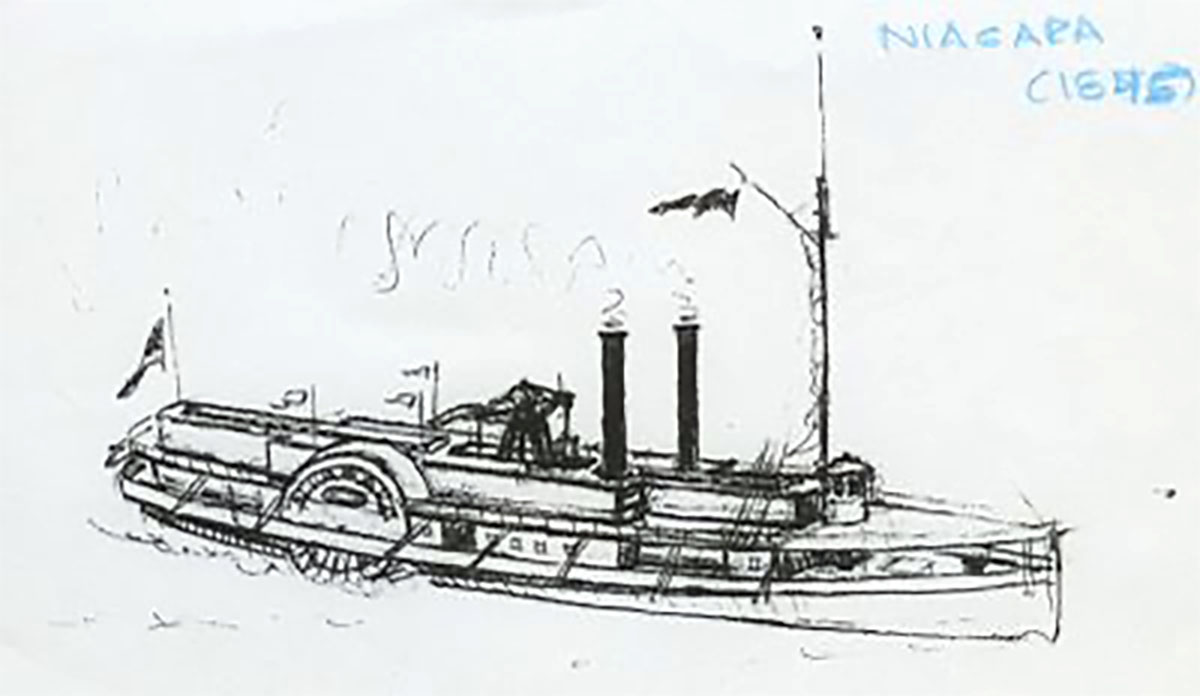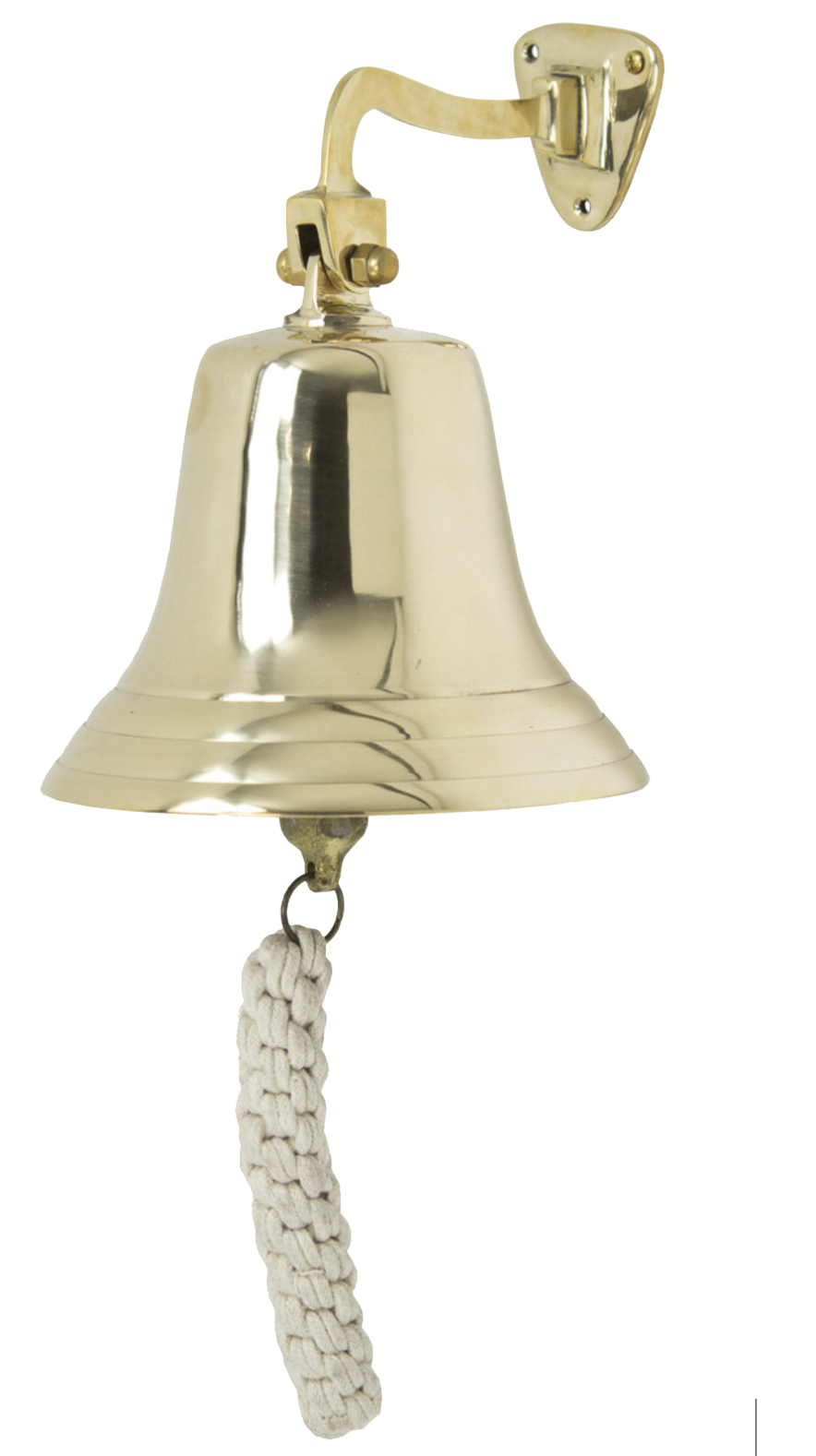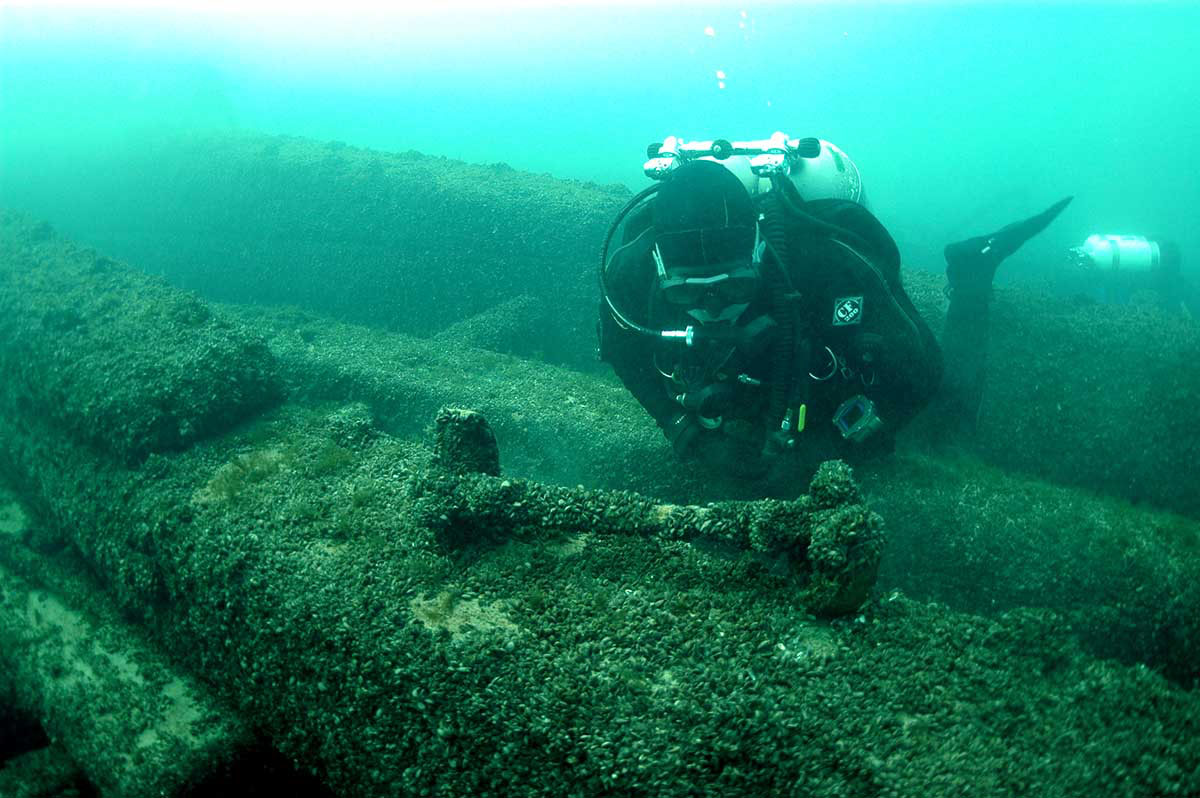Tragedy and Transportation on the Great Lakes

| Drawing of the Niagara after it was built in 1845. Source |
Introduction
Looking out on the water from the historical marker for the Niagara, imagine you see a ship a mile away, flames escaping from all 225 feet of the ship. People are yelling and jumping into the water as a bell rings on the ship, warning passengers and alerting other ships for help. This bell, scavenged from the site in the 1970s, represents the destruction that was seen on the ship when it inexplicably burst into flames in 1856 near Port Washington. |
Introduction of the Niagara
The construction of the Niagara, a wooden steam boat, was finished in 1845 and was the second Great Lakes Palace Steamer built. While the ship was not the first on the Great Lakes, the Niagara offered the promise of a bigger and better ride from Buffalo, New York to Chicago, Illinois— an essential path for those looking to immigrate westward. While the ship did not stop in Port Washington, passengers immigrating to cities like Milwaukee or Chicago likely sprawled out to smaller towns like Port Washington. |

| This bell, a brass ship bell with rope handle, is an example of what the Niagara’s bell might have looked like. Source |

| The bell from the Niagara scavenged from the wreckage site in the 1970s. Flames melted the bell, leaving it disfigured. |
Final Voyage
The Niagara’s final voyage was in September of 1856, when it left Ontario, Canada, stopped in New York, and then headed towards the Midwest. It held 105 tons of cargo along with carrying 21 horses and hundreds of passengers. Right outside of Port Washington, the ship burst into flames quickly and unexpectedly, panicking passengers and crew alike. Staff on the ship began to tear down doors to use as floats in the water while the bell rang as a warning. While there were several safety mechanisms in place, none of them were executed correctly due to the flurry of commands and emotions within the ship. |

| Archaeologist at the site of the Niagara. Source |
Ravage and Remains
While the number of deaths has never been confirmed, the estimate is around 60; the cause of the fire is also unknown. The fire ravaged the ship in less than an hour, causing everything that remained intact on the ship to sink with it in Lake Michigan. Today, the Niagara remains on the lake floor about 50 feet deep, a popular destination for Great Lakes scuba divers. |
Timeline
|
Why I choose this object?
|

Emma Hurbanis
contact
History 401 [Spring 2022]
Leslie A. Bellais
contact

